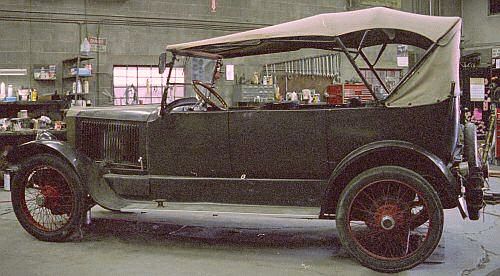|
Left Side View Most folks are surprised to find a car assembled of aluminum in the early part of the 20th century. The Stanley body was smooth-line, with flush sides. Doors were latched with interior handles. The body rested on a channel-section, pressed steel frame. The front axle was supplied by Timken and mated with Warner worm and gear steering. An 18-inch metal spoke with carved wooden hand-grip steering wheel was mounted on the left side (pre-1915 cars were all right-hand drive). The rear axle was a custom Stanley design using Timken bearings for the differential and SKF bearings for the wheels. Fourteen-inch drums with a two-inch face on the inside of the rear wheels provided braking action. The pedal service brake was an adjustable, contracting, external-band, asbestos lined brake shoe that squeezed on the drum while the hand emergency brake was an adjustable, expanding, internal drum design. The standard color offering for the car was Valentine Valsparís Royal Green with gloss black fenders and splash guards (the metal insert between the running board and the bottom of the body). A two-inch wide gloss black highlight stripe encircled the top body profile of the car and included the gloss black windscreen shield. Stanley made exclusive use of Valentine Valspar paints and any color could be ordered special for any detailing scheme for added cost. The windshield is of Troy slanting design with ventilating and rain vision. All bright-work was nickel plated. Genuine, straight grain, black leather was used for all upholstery. The seats featured coil spring suspension and the leather was pleated and filled with curled horse-hair. Black tops were standard and were said to be able to be put up or taken down by one person. |
